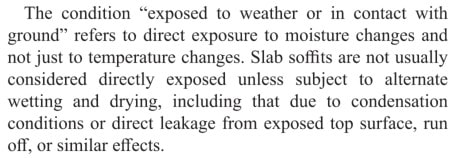WayneRuin10
Structural
Hello All,
I have a concrete slab where the top surface is exposed to weather, however the bottom surface is not exposed to weather. Keeping that in mind, does the ACI allow me to have a smaller cover at the bottom? Since bottom surface is not exposed to weather?
Thank you!
I have a concrete slab where the top surface is exposed to weather, however the bottom surface is not exposed to weather. Keeping that in mind, does the ACI allow me to have a smaller cover at the bottom? Since bottom surface is not exposed to weather?
Thank you!

